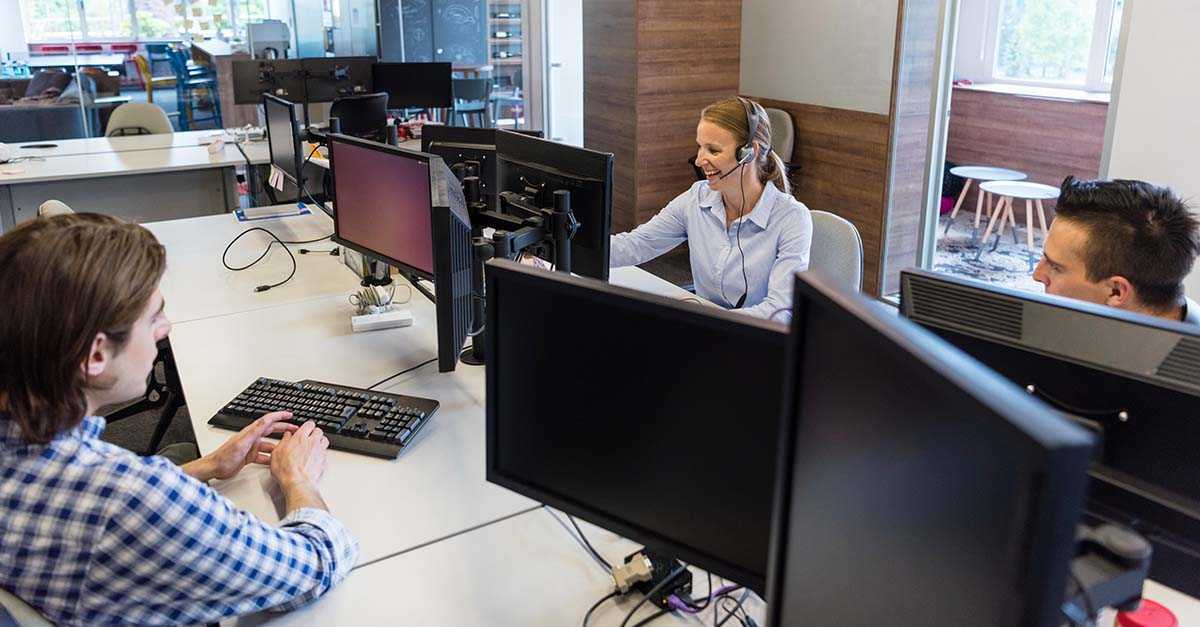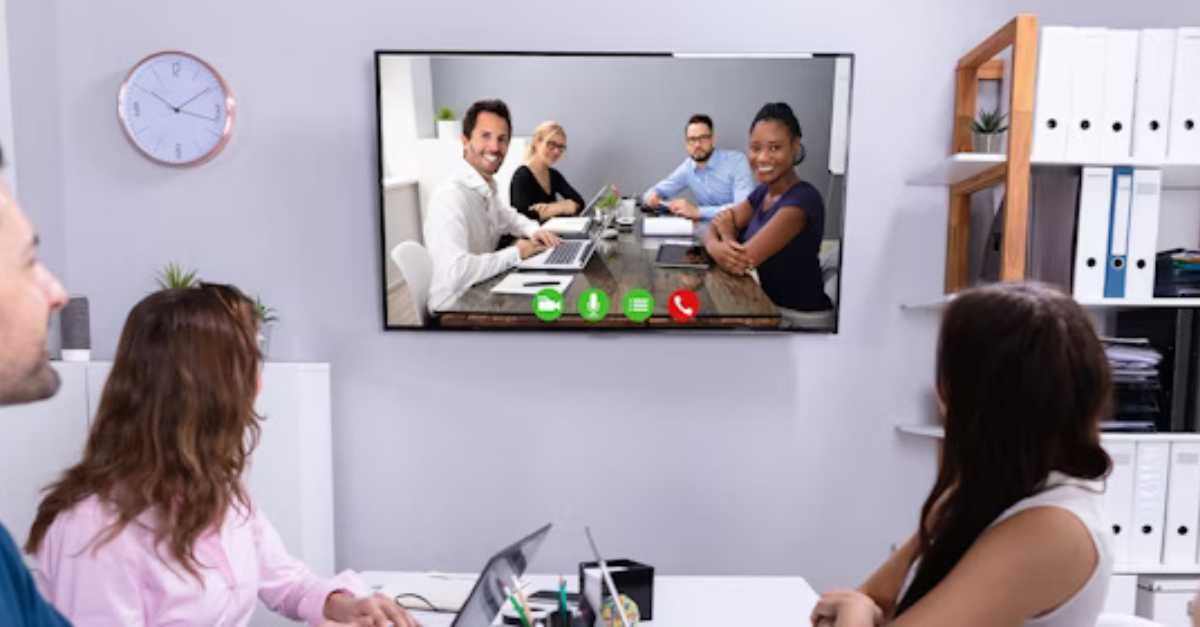
Unlock Smarter Workspaces: Why Real-Time Space Analytics Are Essential for Modern Corporations
Gain an understanding of real-time space insights, its benefits and how you can use it to optimize your corporate real-estate portfolio.
Solutions
Workplace Management Solutions
Real Estate Management Solutions
Maintenance Management Solutions
Energy Management Solutions
Engineering Document Management Solutions
Asset Management Solutions
Automate campus scheduling for classes, meetings, and exams with our EMS software.
Plan and manage conferences effortlessly with EMS software to impress guests and streamline operations.
Boost workplace flexibility and maximize space use with seamless desk and room booking.
Organize workplace or campus events smoothly, creating memorable experiences.
Optimize workspace, manage allocations efficiently, and reduce costs with our space management solutions.
Deliver projects on time and within budget by improving communication, collaboration, and efficiency with our software.
Streamline lease accounting for ASC 842, IFRS, and GASB compliance.
Manage leases efficiently by tracking key dates, analyzing costs, and ensuring compliance.
Centralize data and analytics for better insights, faster negotiations, and revenue growth.
Centralize facility and asset maintenance, automate work orders, and ensure compliance with our CMMS software.
Extend asset life, reduce downtime, and prevent costly repairs with data-driven monitoring.
Prevent equipment failures and extend asset life by detecting and addressing issues early.
Make sustainable, cost-efficient energy decisions by monitoring and optimizing power consumption.
Remotely monitor and control equipment with real-time data to predict issues, boost efficiency, and reduce downtime.
Easily share and collaborate on documents, creating a single source of truth for engineers and contractors.
Manage and analyze assets across their lifecycle to schedule maintenance, reduce downtime, and extend lifespan.
Improve visibility, automate work orders, and ensure compliance for efficient facility and asset management.
Resources
Browse our full library of resources all in one place, including webinars, whitepapers, podcast episodes, and more.
Support
Looking for access to technical support, best practices, helpful videos, or training tools? You’ve come to the right place.
About Accruent
Get the latest information on Accruent, our solutions, events, and the company at large.

What is the emerging shape of the hybrid workplace, and how do we plan for future technologies? Explore this topic in a discussion with Meta’s Chirag Kadiwar.
By: Chris Smart, Senior Director, Product Management, Accruent
Hybrid work has raised the bar for workplace programs and technology. As companies consider their back-to-office plans, workplace technology can have a big impact on collaboration, productivity, well-being, and management needs. In this new environment, many industries are asking themselves:
What is the emerging shape of the hybrid workplace? And how do we plan for future technologies?
I recently sat down with Chirag Kadiwar, Director of Workplace Planning at Meta, to talk about creating a flexible and seamless employee experience. Drawing on Meta’s experiences, we explored how to encourage collaboration, provide a unified experience, and manage overall space allocation, as well as how to predict and plan for future tech needs.
It is a fascinating look at how the tech giant Meta is approaching the return to work ― and a glimpse into the future of the office.
Employees today desire flexibility, which equates to essentially being able to control the times and places they work. But company leaders tend to want to directly manage the workforce because they believe it puts them in a better position to deliver on their business goals. Given that these two aims are not always in 100% alignment, what implications does that have for the shape of today’s workplace?
At Meta, the role of the office is seen as a place where employees gather to interact with their team and build long-lasting relationships. Many of us have experienced moments in the past two years, such as when working on complicated projects, when we wished to be back in the office for face-to-face conversations and synchronized thought processes. Chirag anticipates that the workplace environment will cater to those types of interactions while complementing work done virtually.
In addition, it’s important to keep in mind that the office may be the ideal place for individual, productive work. Not everyone has a productive setup at home, especially in large urban cores where younger employees in the earlier stages of their careers may be working from smaller apartments. Individual productivity sometimes needs to happen in the office.
When Meta was announced, one of the lines that stood out to me was “the defining quality of the metaverse will be a feeling of presence, like you are right there with another person or in another place.” As I see it, presence is more than just proximity — it is intentional experiences. And we’re seeing a shift to exactly that in the office. We went from everyone being in the office together, to being full-time remote, to now a hybrid approach with the critical importance on connecting your work, your employees, your culture, and your team.
As Chirag puts it, previously it was a numbers game. You had X number of employees and therefore needed Y number of seats at the office. The two numbers were correlated, so you built those seats and then created a nice experience around that anchor point. But we’re shifting now to a scenario that starts with a deliberate focus on the experiences you want to drive at the individual, team, and company level. First you intentionally figure out what those experiences should be in the workplace ― and then build the workplace around that framework.
Change can be difficult, and I’ve been pondering how the workforce will react to major changes in the office. As employees, we’ve become accustomed to and enjoy the perks that we’ve had in the past. Although companies are investing in initiatives like wellness and the employee experience, they’re often accompanied by a scaling back of some of those perks. That got me wondering about how companies can best engage with the employee base to increase receptivity to some of the changes in strategy.
Chirag noted that in many cases, it’s less of a shift and more of a new beginning. At Meta, for example, about 50% of the workforce population has been new hires over the last two years. This means that many of the employees have never been into the Meta workplace, and that helps pave the way for the company to make sure they create experiences that are needed now as opposed to what was needed a couple of years ago.
Few companies have undergone a seamless return to the office. For most of us, the roadmap has been full of stops and starts, and we’ve had to make some U-turns along the way. Meta is no exception. But when I asked Chirag to reflect on what they have done as a team and a company to make the transition as smooth as possible, three key tenets stood out.
As I look around the industry, I see various predictions about the future office. Some leaders say hybrid work is here to stay while others say we’re in a slow (or in some cases, not-so-slow) transition into the full-time in-office experience. Bank of America made waves recently, for instance, when they announced they are a work-from-work company and that employees should expect to be in the office five days a week.
From Chirag’s perspective, one of Meta’s primary goals is to make distributed work, work. He sees it involving three different components. One, seamless, virtual connections among employees, no matter where they are located. Two, in-person formal and informal connections in the office. And three, a focus on creating a workplace environment that promotes deep-thinking, individual work.
The hybrid office simply wouldn’t be possible without technology. It’s difficult, for example, to try to imagine a meeting for both in-office and remote employees without video conferencing tools. But many other technological tools keep the hybrid office humming. To illustrate this point, I asked Chirag about the technology Meta is using or exploring, which he called the “centerpiece” of the return to office. Just a few of the technologies:
One potential drawback of remote work is the lack of connectedness some employees may feel — connectedness to their coworkers, to their jobs, maybe even to their communities at large. Keeping the remote employee engaged is no easy task, but technology can ease that burden.
Meta, like many companies, relies on video conferencing tools like Zoom or their own Workchat application. They use online whiteboards so employees can ideate and explain their thought processes in a visual way. Chirag also mentioned his Meta’s Portal device, which the company gave to each employee when they went into shutdown so that employees can connect seamlessly and have a rich experience.
As organizations collect data about their workplace, it’s important that they analyze how they’re using it — whether it's cost data, utilization data, engagement data, effectiveness data, or something else ― to drive portfolio decisions. This has been a long-held belief here at Accruent, but over the past couple of years, we’re seeing significant, concrete adjustments in office space utilization. I asked Chirag what they were doing to repurpose potentially underutilized spaces.
He noted that across the board, most of their spaces have been somewhat underutilized for the last couple of years because people have been predominantly remote, and they’re just now beginning to see how employees are back in the office and interacting with the space. Keeping new hires in mind, the company is building out community centers (townhalls) across their portfolio where people can come in and experience the Meta culture. The company is not yet implementing major portfolio changes, but once the short-term goals of experimenting, iterating, and measuring space usage are solidly in place, Meta will start baking into future real estate portfolio plans.
Workplace management professionals are in a great place today in terms of thinking about what the future of the workplace needs to be. We have an opportunity to step back and evaluate what role the hybrid office can play, as well as what kind of intentional experiences we want to drive. And technology can help get us there.
To find out more about the technologies powering flexible work, check out our on-demand webinar The Resilient Workplace: The Tech Businesses Need for Long-Term Success.
Gain an understanding of real-time space insights, its benefits and how you can use it to optimize your corporate real-estate portfolio.
Gain an understanding of real-time space insights, its benefits and how you can use it to optimize your higher education campus and facilities.
Make the most of your current office environment. See how space management tools like EMS can help you expand and improve your use of workplace ...
Subscribe to stay up to date with our latest news, resources and best practices.
* To unsubscribe at any time, please use the “Unsubscribe” link included in the footer of our emails.